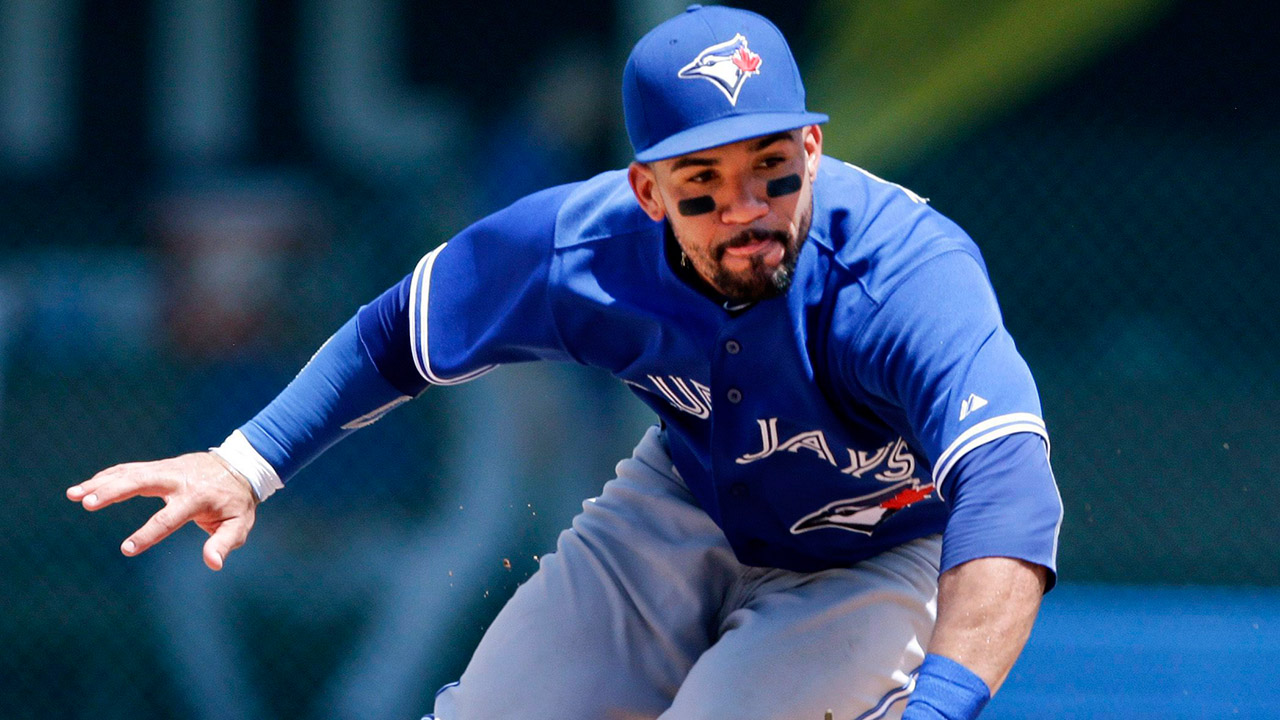Devon Travis is not awfully fond of the word ‘projectability.’
During the 2012 MLB Draft, the five-foot-nine second baseman watched 423 players get picked before him largely because they supposedly had it and he didn’t.
“The draft bothered me for sure, although I’m thankful it worked out the way it did in the end,” he says. “But you’re sitting there on draft day and you hear about where you’re supposed to go, or where they’re going to take you, and rounds pass and picks pass and they’re taking shortstops and second basemen. It’s tough.”
Looking back on the experience he feels the way he slid boils down to teams feeling he was too close to his ceiling as a player.
“The projectability word gets thrown around in the draft a lot of the time where smaller guys or skinnier guys that don’t really have room to grow get overlooked,” Travis says.
Instead of evaluating what players are, scouts have the far more difficult job of trying to predict what they might be in a few years. When they looked at Travis, it was hard to envision him as a big leaguer.
“Having a mature frame, being a little bit smaller and being second base-only, probably hurt him a fair amount,” says Tim Wilken, longtime scout and special assistant to Diamondbacks GM Dave Stewart.
Now Travis is having the last laugh. The 25-year-old owns a .292/.342/.475 batting line in his first 415 MLB plate appearances, plays far better defence than most expected and has already survived a gruesome shoulder injury. On a franchise with a lot of post-2016 uncertainty, he looks like a potential core piece.
So, how does a guy like that get passed in the draft a dozen times by each MLB franchise and traded straight up for a fourth outfielder type who’s now plying his trade at double-A?
For one, he is the antithesis of the man he was traded for, Anthony Gose, in the sense that he lacks loud tools. Travis will hit his fair share of home runs, but they aren’t going to be 450 foot shots to dead-centre. He can run, but he’s no Billy Hamilton. His fielding is steadier than it is flashy.
“Devon is the type of guy you’d have had to see more than once,” Wilken says. “You couldn’t walk into the ballpark and say ‘that’s a great player.'”
The problem is that scouts often only get one chance to see a player. The all-around game of someone like Travis may not stand out in a single-game sample the way a player with extraordinary speed or power would. It’s easier to spot a strength than a lack of weaknesses.
Perhaps the bigger issue is his position. Second basemen simply do not attract the same attention from talent evaluators as other “up the middle” positions like catchers, shortstops and centre fielders.
“Second basemen are generally looked at as failed shortstops,” says Jonathan Mayo, senior prospect writer for MLB.com. “They’re guys who don’t have the range or the arm to stick at short.”
Recent draft results bear out Mayo’s observation, as the last time a second baseman was selected in the first 30 picks was 2011 when Cory Spangenberg and Kolten Wong went 10th and 22nd respectively.
In their 2016 draft class the Toronto Blue Jays selected a single second baseman, Cavan Biggio, in the fifth round. Among 41 picks only three were first, second or third basemen.
One of the issues for players who make their home on the right side of second is the perceived lack of versatility.
“Once you get typecasted as second base only, that’s basically it for you,” Wilkens says.
Shortstop prospects can be moved to second or third easily depending on their evolution as ballplayers and their teams’ needs. Second basemen stay put for the most part, which gives them a single route to the big leagues and less value as bench players if they arrive.
The logic is sound, but its rigidity allows talented players to fall through the cracks. MVP candidate Jose Altuve is a perfect example of a second base-only prospect who has exceeded expectations enormously.
“I think it happens fairly regularly where these guys are not evaluated correctly, even by people like me,” Mayo says. “A great example is Altuve, he was nowhere on prospect lists. Literally nowhere.”
Even Robinson Cano, a likely Hall of Famer, was dogged by concerns about his position as a prospect. John Manuel, the editor of Baseball America, recalls having his doubts about Cano, despite his offensive prowess.
“We thought he would wind up being too big for second and wind up at third, and the scouts we talked to weren’t sure he’d hit for enough power to shine at third as a regular,” he says. “We liked him but didn’t love him; part of that was that he was a second baseman.”
There’s no reason second basemen are overlooked that’s outrageous or unreasonable. Shortstop is where the best athletes play and the best athletes usually make for better baseball players. When you’re looking for a player to contribute at the major-league level five years down the line, physical tools and versatility are a nice starting point.
That said, there are plenty of good ballplayers that make their homes at second base. They often get by on skills rather than athleticism, and it might take more than one viewing by scouts to discover them, but they are definitely worth finding.
More than a few teams could use a guy like Devon Travis.

